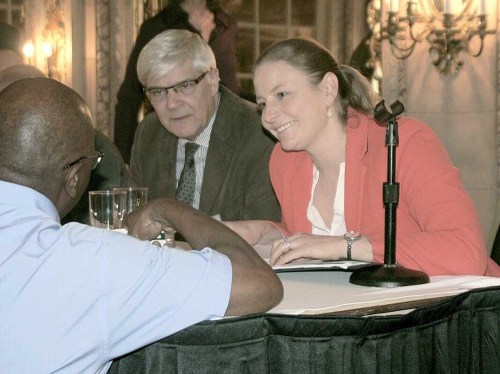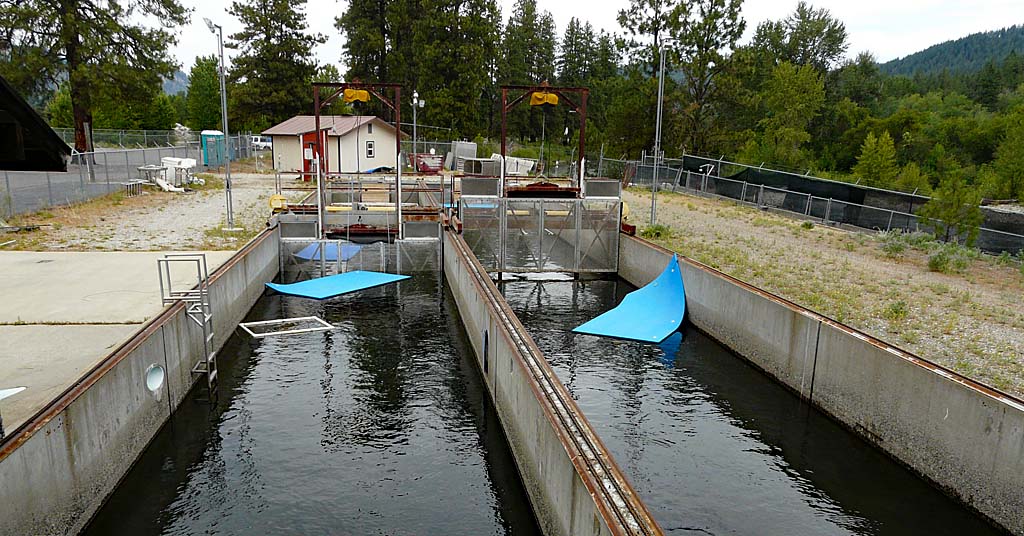Negotiator: U.S., Canada look for ‘meeting of minds’ on Columbia River Treaty
Published 11:00 am Wednesday, June 7, 2023

- Jill Smail, U.S. Columbia River Treaty negotiator, right, speaks with an audience member after a town hall meeting in Spokane, Washington, in 2018.
The U.S. and Canada hope to soon reach “a meeting of the minds on the core issues” during negotiations for a new Columbia River Treaty.
U.S. chief negotiator Jill Smail gave an update during a public listening session May 31.
Trending
In September 2024, without an updated agreement, the U.S. will lose access to pre-planned flood risk management space in Canadian reservoirs.
“We’ve made significant progress, but we know September 2024 is just around the corner for planning purposes,” Smail said. “We’re working very hard to find common ground so sovereigns and stakeholders in both countries can begin planning for the future.”
She said the U.S. goals are:
• Maintain a “predictable and adequate” level of flood risk management space in Canadian treaty reservoirs.
• Rebalance the Canadian entitlement, the power benefit the U.S. sends to Canada.
• Improve coordination on ecosystem issues, including support for salmon migration in the Columbia Basin.
Trending
Since an April 19 listening session, the U.S. and Canada had a virtual meeting between negotiating teams, and in-person negotiations May 16-17 in Kelowna, British Columbia. They also had several technical working group meetings.
The in-person discussion included:
• Managing flood risks after the treaty regime changes in September 2024.
• Planning for treaty hydropower operations.
• Integrating Canada’s desire for greater flexibility for treaty dam operations.
• Mechanisms for incorporating tribal input.
• Opportunities to strengthen treaty ecosystem provisions and collaborate on salmon reintroduction studies.
Smail called the meeting in Kelowna “a very special and moving opportunity” to celebrate ongoing efforts to reintroduce and rebuild stocks of sockeye salmon in the region.
“The success of sockeye salmon recovery in the Okanogan Subbasin is an inspiring example of transboundary coordination, especially the vision and collaboration of the Colville Confederated Tribes and the Syilx Okanagan Nation,” she said.
The fish and water management tool serves as a model of various water managers working together to share fish, economic and flood risk management objectives “to achieve an outcome that works for the people and for the environment,” Smail said.
Coordination will remain necessary as warming trends further challenge the salmon on their journey from the ocean to their spawning habitat, Smail said.
Smail’s team continues to use the 2013 U.S. entity regional recommendation as a guide during negotiations.
“We consider the feedback we get from residents, tribes, stakeholders and from events like this,” Smail said.
About 22 people spoke during the May 31 session.
Rob Rich, vice president of marine services for Shaver Transportation Co. in Portland, was the only agricultural stakeholder to provide comment.
Rich praised Smail and the negotiation team for doing an “exemplary job” balancing the myriad of needs of multiple stakeholders on the Columbia River system.
The Columbia maritime infrastructure is designed and operated to maximize safety and reliability provided by the treaty, Rich said.
The treaty contributes to the “robust” agricultural export system used by the U.S. and Canada, he said.
“We ask that you continue your negotiations with this great system value in mind,” Rich said. “We urge your negotiating team to continue to move forward for a settlement that ensures this safe system operates for the next 50 years.”
Many speakers, representing various environmental groups, asked the negotiating team to add ecosystem function as an equal third purpose for the treaty.
Virtual meetings are planned for June and July, and another in-person negotiation session is scheduled for August in the U.S., Smail said.









